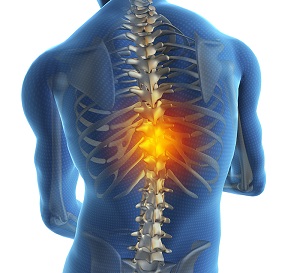
Revision spine surgery is performed to correct the problems of earlier spine surgery. It is considered when you do not obtain relief from pain following the initial surgery. Other factors indicated for revision spine surgery include:
- Scar tissue formation
- Symptoms persist or worsen, or development of new symptoms
- Failure of bone fusion
- Loosening of instrumentation
- Bone infection around instrumentation
- Formation of arthritis after bone fusion
- Deformity progresses
- Compression of surrounding nerve by bone or implants
The most common symptoms of a failed spinal surgery are back or leg pain, fatigue, and deformity. Symptoms usually show years after the initial surgery.
Procedure
Revision surgery is a complex surgery that requires a thorough evaluation to identify and understand the cause for failure of the first surgery. Your surgeon will review your prior operative reports, current symptoms (intensity, nature, and duration) and perform a physical examination to assess gait, nerve reflexes, balance, range of motion and pain, and rule out vascular problems as a cause for symptoms. Blood tests and imaging studies such as X-ray, MRI scans, and CT scans are usually ordered to examine the thoracic spine for infection and abnormalities.
Thoracic spine revision surgery aims to reduce pain and allow normal activities. Depending on the problem and type of surgery performed, your surgeon will approach the thoracic spine from the front or back. It can be performed minimally invasively through small incisions and the use of a laparoscope, a lighted tube with a camera attached.
Revision surgery may involve one or more techniques depending on the deformity:
- Fusing additional vertebrae adjacent to a previous fusion to correct degenerative changes
- Including additional instrumentation to eliminate instability, or removal and replacement of implants to reduce infection or pain caused by them
- Removing infected tissue through irrigation and debridement
- Decompression of compressed nerves to relieve pain
- Osteotomy, where fractures are made in the bone to restore normal spine alignment and stop the progressive deformity
Following revision surgery, you will be administered pain medication to keep you comfortable and antibiotics to prevent infection. You will be encouraged to move on the first day after surgery, which will gradually transition into a rehabilitation program.
When compared to the initial surgery, thoracic spine revision surgeries may be associated with a higher rate of complications such as wound infection, urinary tract infection, clot formation in the leg, tearing of the dura (spinal cord membrane) and pneumonia.










